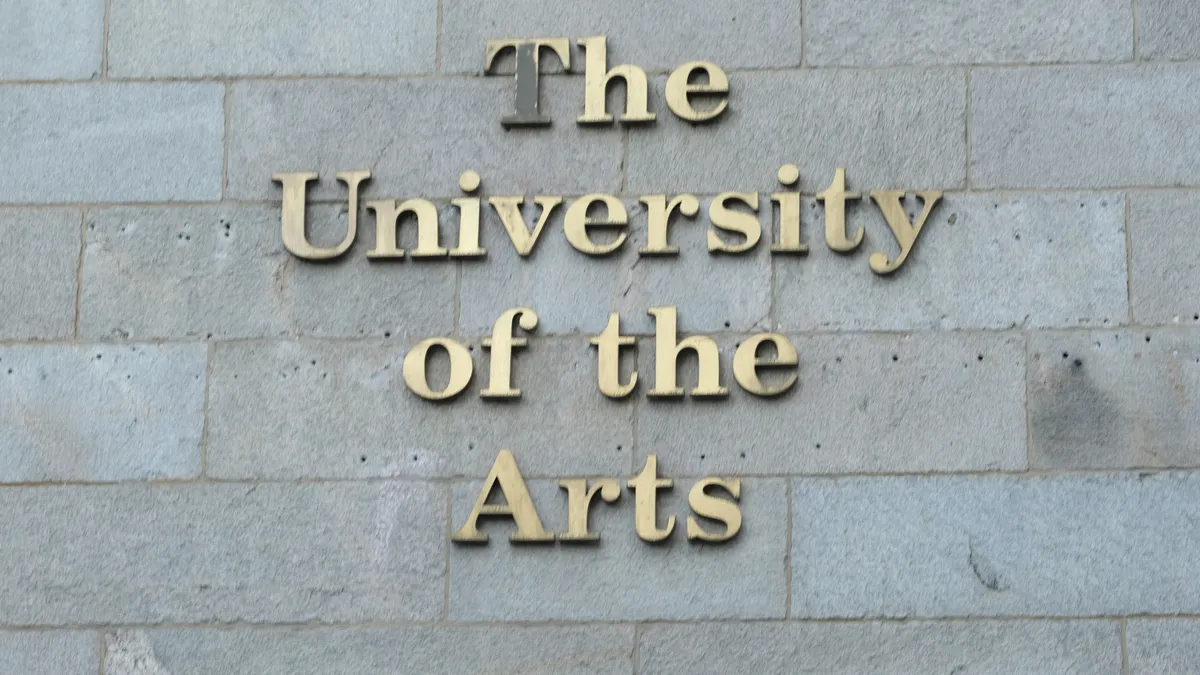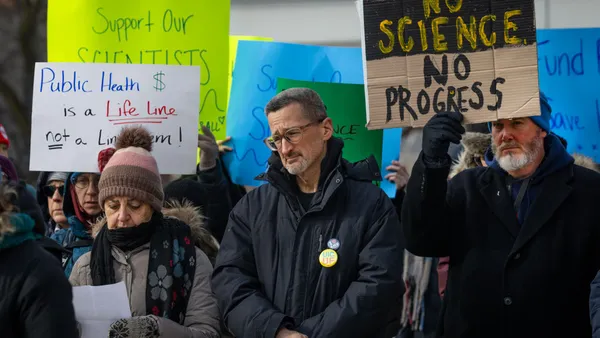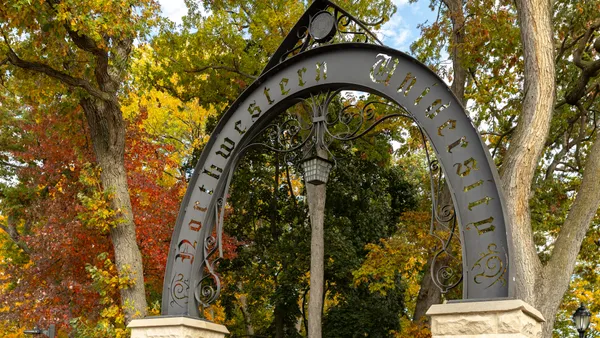Dive Brief:
- The University of the Arts filed for Chapter 7 bankruptcy Friday as it looks to liquidate following the institution’s sudden closure in June and failed merger talks with Temple University.
- In its bankruptcy petition, the Philadelphia-based UArts listed $93.3 million in property and other assets, and $69 million in claims secured by its property.
- The university also has $5.2 million in unsecured claims against it, including numerous potential claims for compensation from former employees as well as unpaid vendor bills. UArts additionally listed 11 pending legal actions against it, including class-action lawsuits filed by former students and employees.
Dive Insight:
Three months after UArts closed suddenly, its campus community is picking up the pieces. For many that entails, in part, trying to get paid.
Among them are staff and faculty who filed a lawsuit in June under the WARN act, arguing that they are entitled to 60 days worth of compensation because the university did not give sufficient notification of the layoffs.
United Academics of Philadelphia, a union representing UArts faculty and staff, also filed unfair labor charges against UArts with the National Labor Relations Board, arguing that the institution failed to properly bargain with the union over compensation for laid-off employees and those who worked after it closed its doors. Those charges are among the legal actions noted in the bankruptcy filing.
“This filing comes as former students, staff and faculty continue to struggle with the damage done to their educations and careers, and while the UArts Board has neglected its legal, contractual, and moral obligation to negotiate severance payments for workers affected by UArts’ collapse,” the union said in a Friday statement following the bankruptcy filing.
The university’s bondholders are also trying to get paid. Two weeks after the university shut its doors, UMB Bank issued a notice of default and demand for full payment of bonds worth about $46 million today, according to an August document from the trustee.
Until last month, UArts officials were in talks with nearby Temple about ways to preserve the university’s legacy, with a potential merger reportedly on the table.
But in August, Temple leaders said in a public statement that “the university will not be moving forward with a transaction at this time.” They said they couldn’t find a solution in “the best interest of Temple’s community and mission.”
The deal broke down, according to a report in The Philadelphia Inquirer, over opposition from a major donor to UArts, the Hamilton Family Charitable Trust, which did not want the arts university’s endowment going to Temple.
In the days ahead of the bankruptcy, UArts asked a judge to disperse its endowment to institutions that have absorbed former UArts students, the largest of which is Temple.
In the August statement, Temple officials left open the possibility of exploring “opportunities with other non-profit organizations that might allow us to revitalize and activate UArts’ facilities.”
UArts’ iconic campus in downtown Philadelphia stands as its most valuable asset in bankruptcy. Paying back both its secured and unsecured creditors will likely hinge on selling its properties in the bankruptcy process.
The UAP union said Friday that employees and other direct community members should be the financial priority.
“We will fight to make UAP members whole using every legal avenue available — the priority should not be bondholders or real estate developers, but the flesh-and-blood communities whose lives were upended by this disaster,” the union said.













